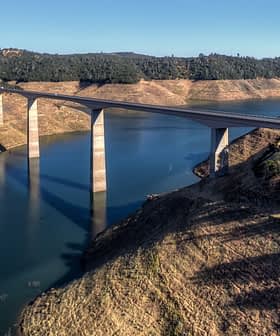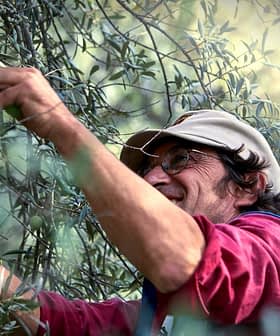Drought Leads to Predictions of Weak Harvest in Argentina

As the olive harvest gets underway in Argentina, farmers and experts in the sector are acknowledging that this year’s crop is happening under very complex economic and agronomic circumstances.
As a result, they predict that the 2022 olive harvest might drop by as much as 20 percent compared to 2020/21.
This year, we plan to increase the production volume a little due to the increase in demand for oil that we had. So we buy olives.
In addition, there is a possibility the olives will produce less oil due to a prolonged drought that interfered with the formation of oil in the drupe, also known as lipogenesis.
Argentina, the largest producer of olives and olive oil in the Western Hemisphere, has been battling dry conditions since the second half of 2021 due to the effects of an unpredictable summer and the La Niña phenomenon, which tends to cause drought in the region.
See Also:Argentina Receives Its First Geographical Indication for Olive OilArgentina has more than 90,000 hectares of olive trees. Most olive groves are found in La Rioja, Mendoza, San Juan and Catamarca. These olive-dense regions were part of the areas that were hardest hit by the drought.
Meteorologists feared that the country would experience a repeat of the severe drought experienced in 2017/18 that resulted in a €3.23 billion economic losses. Though rains came in March 2022, it was too late as crops such as olives, soy and corn were too far along in their development cycles to benefit from the rainfall.
Despite the poor harvest, olive producers and millers are hopeful that the good prices of olives and olive oil in part due to the impacts of the Covid-19 pandemic and the Russian invasion of Ukraine.
The latter has led to an acute shortage of sunflower oil, rising demand for olive oil in Europe and increasing domestic consumption, which will cushion farmers against the impacts of drought and a poor harvest.
“We began the production of Changlot variety olives this week, and we will continue soon with Arbequina,” Diego Calderón, the plant manager at Almazara S.A., told Diario de Cuyo. “This year, we plan to increase the production volume a little due to the increase in demand for oil that we had. So we buy olives.”
“The varieties that we work with the most are Arauco and Arbequina and, to a lesser extent Coratina,” he added. “In yield, we estimate to have something similar to 2021 starting at 14 percent and ending at 19 or 20 percent.”
“The national market is increasing and is the largest consumer of our Fontalba brand,” Calderón continued. “We also work with Mexico for a small part.”
In recent years, the olive sector in Argentina has faced a range of challenges.
In 2021, the Ministry of Agriculture declared a state of emergency and an agricultural disaster in San Juan, one of the main olive-growing regions of the country, due to floods, frosts, hail and intense rains. The damage to olives was so severe that some experts in the sector predicted a double-digit drop in production.
Since olive oil production is labor and energy-intensive, the sector also has retracted extensively due to the low availability of laborers to work in the olive groves. Furthermore, the industry has to contend with the energy crisis due to fuel shortages also spawned by the Russian invasion of Ukraine.









